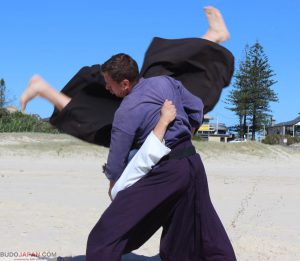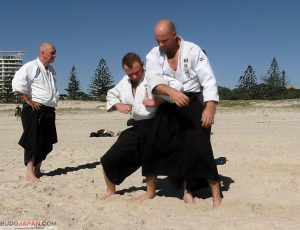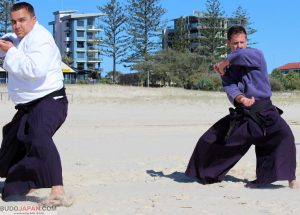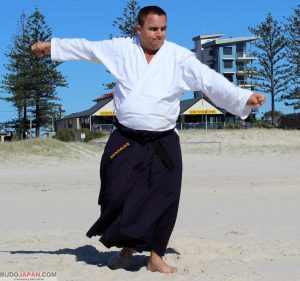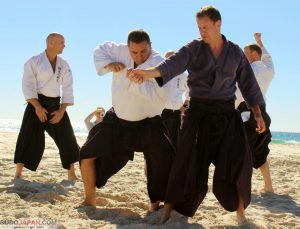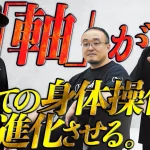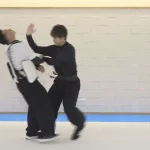[Monthly column] Worldwide Koryu Dojo Report Vol.9 Yagyu Shingan-ryu Heihojutsu in Australia
Interview and Text by Grigoris Miliaresis
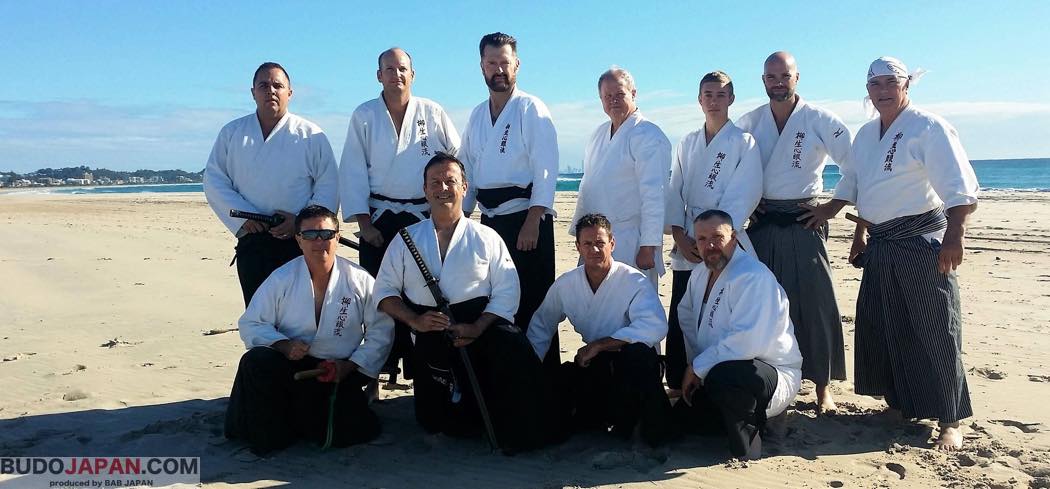
Gold Coast Yagyu Shingan Ryu Heihojutsu Chikuosha Gasshuku. Philip Hinshelwood standing far right. Next to him is his assistant John Hinshelwood. Back row, L-R: Chris Davis, William Torrens, Brad Foster, Paul Massey-Reed, Jim Jewiss, John Hinshelwood, Philip Hinshelwood. Front row L-R: Garry Atkinson. Mike Brady. Simon Louis. Grant Jewiss.
One more time in Australia, we get to meet in our 9th installment, retired police officer and Police Academiy instructor Philip Hinshelwood who has been studying Yagyu Shingan-ryu Heihojutsu and Morishige-ryu Houjutsu Tamizou-den Shimazu-ha under shihan Shimazu Kenji for over 30 years. Besides a personal path, these arts have been for Mr. Hinshelwood an integral part of his work in law enforcement, something many people rarely think possible.

Philip Hinshelwood
Name: Yagyu Shingan-ryu Heihojutsu Goshu Kyodensho Chikuosha
Location: Gunnedah, Australia
Facility: Privately owned dojo
Foundation year: November 1994
Arts practiced: Yagyu Shingan-ryu Heihojutsu and Morishige-ryu Houjutsu Tamizou-den Shimazu-ha
Local affiliation: Australian Jujutsu Association
Japan affiliation (instructor/organization): Shimazu Kenji shihan, Yagyu Shingan-ryu Heihojutsu Chikuosha, Morishige-ryu Houjutsu Tamizou-den Shimazu-ha and Uchi Kanefusa, Oukatai
Instructor’s name: Philip Hinshelwood
Instructor’s credentials/grades: Shihandai Australia Branch
Number of members: 13
Advanced/beginners’ ratio: 10/3
Days of practice/week: Dojo open 9am to 9pm Monday to Friday. Some group training. Mostly private classes.
Social media/email: https://www.facebook.com/yagyushinganryu.heihojutsu/
philiphinshelwood@gmail.com
1) When and how did you get involved with the classical art(s) you practice?

Shimazu Kenji sensei and Philip Hinshelwood on Shimazu sensei’s first visit to Australia ca. 1991.
Originally it was from reading Donn F. Draeger’s books. During the 1970’s koryu did not exist within Australia. However, I was determined to one day become involved in the classical arts of Japan after reading his books -it was only a matter of right timing and introduction. In January 1989 I met Shimazu Kenji sensei of the Yagyu Shingan-ryu Heihojutsu ‘Chikuosha’ at his home in Nishigotanda in Tokyo. I had been in Japan for some time training with Ikeuchi Kokichi sensei of Sogo Jujutsu Shudokan who was my first Japanese teacher of modern budo. I was also training at the Yoseikan and Nippon Shorinji Kempo dojo in Shizuoka. It was Ikeuchi sensei who took me to Shimazu sensei’s home and introduced me.
2)How widespread is the classical art(s) you practice in your country? How about classical arts in general?
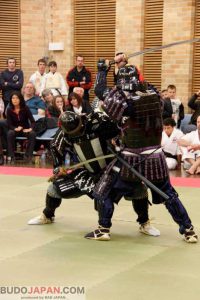
Philip Hinshelwood (Left) and Dr. Andrew Melito (Right) demonstrating Yagyu Shingan-ryu Heihojutsu at the NSW Karate Championships Australia.
Australia is a big country. Yagyu Shingan-ryu Chikuosha is spread far and wide from Noosa, Brisbane and the Gold Coast in Queensland to Sydney in New South Wales and in the outback (North West) of New South Wales at Gunnedah where our head dojo is located. From the Gunnedah dojo I have travelled 760km into Queensland to teach my students in Noosa, Brisbane and the Gold Coast. We also have an annual gasshuku on the Gold Coast where all members attend. We also have another gasshuku in the Hunter Valley about 300km from the Gunnedah dojo where I have two students. I have two students in Sydney which is 500km from Gunnedah. A few classical martial arts in general are in just about all capital cities of each state in Australia. I believe Yagyu Shingan-ryu and Morishige-ryu are the only classical arts located in regional Australia.

Yagyu Shingan-ryu Chikuosha dojo at Gunnedah, Australia
3) Do you and the members of your group travel to Japan to practice?
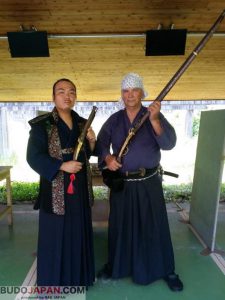
Uchi Kanefusa Oukatai and Philip Hinshelwood, Morishige-ryu Houjutsu Tamizou-den Shimazu-ha and at Tochigi, Nikko
Yes, we do. We usually arrive in Japan late October each year and return to Australia by mid-November. When in Japan we base our group in Kawasaki which is only a short drive to Shimazu sensei. We arrange accommodation for my students, and my son John Hinshelwood and I stay with our “Japanese family”. A couple of us sometimes travel to Japan twice a year.

At Shimazu sensei’s bone setting clinic in Machida. Left to right Uchi Kanefusa, Simon Louis, Shimazu Kenji sensei, Philip Hinshelwood, Brad Foster, Mike Brady, all Australian members.
4) What is the biggest difficulty in practicing classical Japanese martial arts?

John Hinshelwood
For me it would have to be the distance from Australia to Japan which can slow down my education and training in the classical arts somewhat. Obviously, the language barrier can be an issue, but fortunately some of my Japanese colleagues can speak English well. However, here in Australia I practice, study and teach what Shimazu sensei has taught me to the best of my ability on a regular basis. Of course, as I age my body declines, but my mind is sharp, and I can speak from practical experience. John Hinshelwood is my most senior and experienced student and assists me very much during keiko.
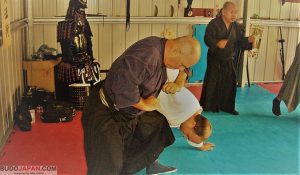
Philip Hinshelwood and John Hinshelwood with Shimazu sensei during keiko at the Gunnedah dojo Australia 2008
5) What is the difference between practicing classical and modern Japanese martial arts?
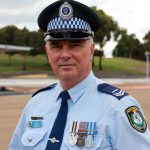
Senior Constable Philip Hinshelwood NSW Police Force on the Parade ground of the NSW Police Academy on his retirement
Initially whilst studying the modern Japanese martial arts in the early 1970’s, my father gifted me the book “Classical Bujutsu” written by Donn F. Draeger. It was through this book and the next two volumes “Classical Budo” and “Modern Bujutsu and Budo” where I began my education into the classical and modern martial arts. For me as a police officer, the reality of the outcome when dealing with a violent person and practicing the classical martial arts such as Yagyu Shingan-ryu along with my mind-set was the difference.

One of the NSW Police Force tactical teams Philip Hinshelwood was instructing. He is in the front row, second from right
6) What is your art(s)’ strongest characteristic, historically or technically?

Shimazu Kenji sensei and Philip Hinshelwood at Gunnedah, Australia, 2008.
I’ve always liked studying history. So, the historical aspects of Yagyu Shingan-ryu and the previous headmasters is very interesting and important to me: I have so much respect for our preceding headmasters of the tradition. The same is also true about the technical aspects, for example when and why certain techniques were introduced into the tradition such as the torite idori. As a 32-year veteran police officer (now retired) I particularly focused on Yagyu Shingan-ryu torite jutsu and yawara during my career when dealing with violent offenders. Technically Yagyu Shingan-ryu and its practicality were paramount during my time serving a small outback (isolated) community as the only police officer for 8 years with my nearest back up 50km away. Also, as an instructor at the Police Academy and operative in the tactical teams, and when I was instructing many other police officers in weapons and defensive tactics. Several police officers I worked with, studied Yagyu Shingan-ryu under me and some still do. Shimazu sensei was also our guest instructor at one of our police weapons and defensive tactics days in 1993 during one of his several visits to Australia. He left an immense impression on the Police Officers.
7) What is the benefit of practicing classical Japanese martial arts in the 21st century -especially for someone who isn’t Japanese?
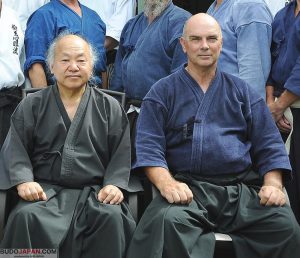
Shimazu Kenji sensei and Philip Hinshelwood at Gunnedah, Australia ca. 2013.
Whilst the weapons of Yagyu Shingan-ryu are archaic, I do have a valued sense of satisfaction when practicing with them. When I was teaching police recruits at the Police Academy, I would teach the firearms handling methods based around the Yagyu Shingan-ryu sword drawing principles. The same applied also when I taught the long baton and extensible baton techniques, much like the hanbo; it was much like kata and the recruits enjoyed the teaching method as opposed to additional methods of teaching by other police instructors who had no Japanese classical or modern martial art experience.Through experiences such as those, I and my Yagyu Shingan-ryu students, including police officers and civilians, gained the added benefit of creating strong relationships here as well as in Japan with our fellow practitioners and with Japanese police officers. One more benefit is that this practice keeps me physically sharp and focused and that is allows the few students I teach Yagyu Shingan-ryu to appreciate the tradition and the efforts of our headmaster Shimazu Kenji sensei.”

John Hinshelwood, Australia with Nakamura-san at Meiji Shrine, 2019
8) Is there a Japanese community in you city? Do you have any connections to them and to other aspects of Japanese culture?
There is no Japanese community in Gunnedah. However, I do have a few Japanese friends in Sydney which is 500km from Gunnedah.

Gold Coast Yagyu Shingan-ryu Heihojutsu Chikuosha gasshuku
